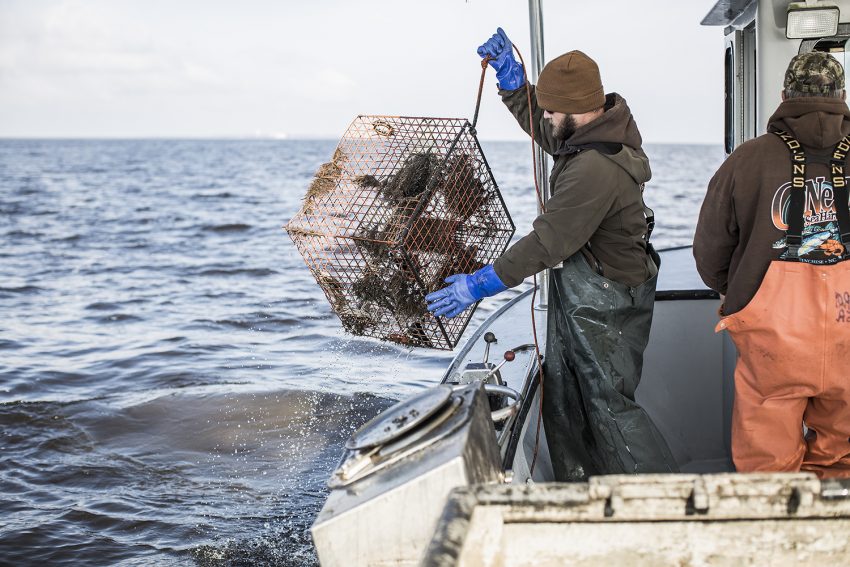 WANCHESE — The North Carolina Coastal Federation is currently accepting applications from commercial watermen to be hired to assist in its annual on-the-water Lost Fishing Gear Recovery Project.
WANCHESE — The North Carolina Coastal Federation is currently accepting applications from commercial watermen to be hired to assist in its annual on-the-water Lost Fishing Gear Recovery Project.
The application period for these jobs is now open for any fisherman with a valid Standard Commercial Fishing License (SCFL) in North Carolina. Watermen are selected to participate in this program annually to help the federation and the North Carolina Marine Patrol remove lost fishing gear from coastal waters during the “no-potting” period, typically from Jan. 15 to Feb. 7.
The 2018 project will take place in select areas within all three Marine Patrol Districts statewide. During the 2017 project, 36 crews, in partnership with Marine Patrol officers, removed 4,304 crab pots in coastal fishing waters statewide. This was combined with three shoreline cleanups that removed more than 3.5 tons of various marine debris in a single day.
To qualify, watermen must have a SCFL license and guarantee availability for work during the period of Jan. 18 through Feb. 7, 2018. They must attend a mandatory training session to learn general project protocols and how to use project equipment (data collection tablets, and for a subset of watermen, side-scan sonars).
Compensation is $400 per boat, per day. Each boat is required to have two people onboard for safety reasons.
This project is funded by the North Carolina General Assembly, with support from the National Oceanic and Atmospheric Administration Marine Debris Program. It improves fish habitat and water quality and supports the coastal economy.
Applications are available for download at www.nccoast.org/crab and will be accepted until Friday, Jan. 12, 2018. Open positions are filled on a first come, first served basis. Completed applications can be mailed to the North Carolina Coastal Federation, P.O. Box 276, Wanchese, NC 27981, faxed to 252-473-2402, or scanned and emailed to sarajh@nccoast.org.
For more information, contact Sara J. Hallas at 252-473-1607 or sarajh@nccoast.org.
Check out this video from last year’s project to learn more:
